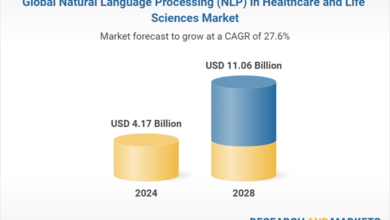Data analytics playing pivotal role in driving change in Indian logistics sector: Porter

Founded in 2014, Porter is one of India’s leading logistics companies providing a spectrum of intra-city and inter-city services. The company strives to improve the lives of over 7.5 lakh owner-drivers by providing them with financial access, affordability, and financial independence.
Data forms the bedrock of efficient logistical operations. With logistics thriving on data sources and most importantly, consumer preferences, it is imperative to ensure data-driven approaches and solutions to cater to the customers and driver-partners in an effective manner to be successful in providing seamless logistics services.Powered by data-led innovation, Porter strives to improve its customer fulfilment and driver-partner experience to focus on refined matchmaking and reduce driver-partner related cancellations.
Arghya Sarkar, Director, Data Platform, Porter, tells us more. Excerpts from an interview:
DQ: Elaborate on the the role of data analytics in shaping India’s logistics ecosystem.
Arghya Sarkar: The Indian logistics sector is undergoing a significant transformation, and data analytics is playing a pivotal role in driving this change. There are three key spaces in which data is creating a large impact –
* Optimization and efficiency,
* Cost reduction and transparency
* Customer experience.
At the same time, India, being a unique market, also faces unique challenges, like a fragmented market with numerous small and medium-sized players and infrastructure bottlenecks that hinder logistics efficiencies.
Here’s how data analytics is driving innovation within the Indian context:
Hyperlocal deliveries: Data empowers logistics companies to cater to the growing demand for hyperlocal deliveries in Indian cities. By analyzing customer location data, purchase patterns, and traffic flows, companies can design efficient delivery models for quick and cost-effective last-mile deliveries.
Rural expansion: Data analytics can help companies expand their reach to rural areas in India. By analyzing agricultural production patterns, demand trends in rural markets, and existing infrastructure, logistics providers can design targeted solutions for efficient rural deliveries and product distribution.
Government Initiatives: Indian government’s push for digitization, including initiatives like the National Logistics Policy (NLP 2022), emphasizes the importance of data sharing and integration. Data analytics can play a crucial role in achieving the NLP’s goals of creating a cost-effective, tech-enabled, and sustainable logistics ecosystem.
By leveraging data effectively, Indian logistics companies can gain a competitive edge, optimize operations, and create a more robust and efficient supply chain network that caters to the specific needs of the Indian market.
DQ: There are challenges faced by customers and driver-partners in goods transportation. How Porter has been using data analytics effectively to address these challenges, and improve the overall experience for its customers and driver-partners?
Arghya Sarkar: There is some impact created by leveraging data analytics for Porter’s operations.
While there are common challenges faced by customers and delivery personnel across various delivery sectors (mobility, food, goods), the complexities of goods transportation necessitate a more nuanced approach. With our purpose to ‘moving a billion dreams, one delivery at a time,’ and thereby making deliveries easy, reliable, and accessible is what we are about.
Customer facing
Problem – Order placement complexity: Unlike standardized food or ride-hailing services, goods transportation involves a wider variety of items with varying dimensions, weight restrictions, and potential fragility.
Solution – Demand forecasting and dynamic pricing: By analyzing historical booking patterns and industry trends, we can forecast demand for specific routes and item types. This allows for dynamic pricing models that adjust based on real-time supply and demand, ensuring fair pricing for customers while optimizing fleet allocation for efficiency.
Problem – On-demand vs. scheduled deliveries: Our marketplace likely handles both on-demand and pre-scheduled deliveries.
Solution – Predictive delivery timeframes: Data analysis helps us predict potential delays based on historical traffic patterns, weather conditions, and route complexities. This enables us to provide more accurate and realistic delivery timeframes for customers, managing their expectations effectively. We also provide Trucks as a service which does not have ready-made available ETAs – where we use our internal data and aptly calibrated algorithm.
Driver-partner facing
Problem – Uncertain delivery conditions: Customers might not always specify all details upfront, leading to unforeseen challenges at delivery locations. Our platform should provide clear communication channels for driver-partners to reach out to customers or support in case of issues like restricted access, parking limitations, or unexpected item characteristics.
Solution – Real-time support and navigation: Driver-partners receive real-time traffic updates and optimized route suggestions based on data analysis. Our platform also offers in-app communication channels for them to reach out to customer support for any delivery-related issues or require clarifications on order details.
Problem – Cash handling and reconciliation: Driver-partners collecting CoD payments need a secure and efficient way to manage cash. Our platform should offer a streamlined process for cash collection, reconciliation, and timely settlements.
Solution – Automated cash reconciliation: Data analysis helps streamline COD processes. Driver-partners can use the platform to record and reconcile COD collections electronically, reducing manual work and ensuring faster settlements.
By continuously analyzing and leveraging data, we strive to create a win-win situation for both customers and driver-partners. Over the years, we have been able to improve our platform utilization and enhance our on-time arrivals while also saving costs on communication channels.
Our data-driven approach fosters a more efficient, transparent, and user-friendly goods transportation experience within the Indian market.



